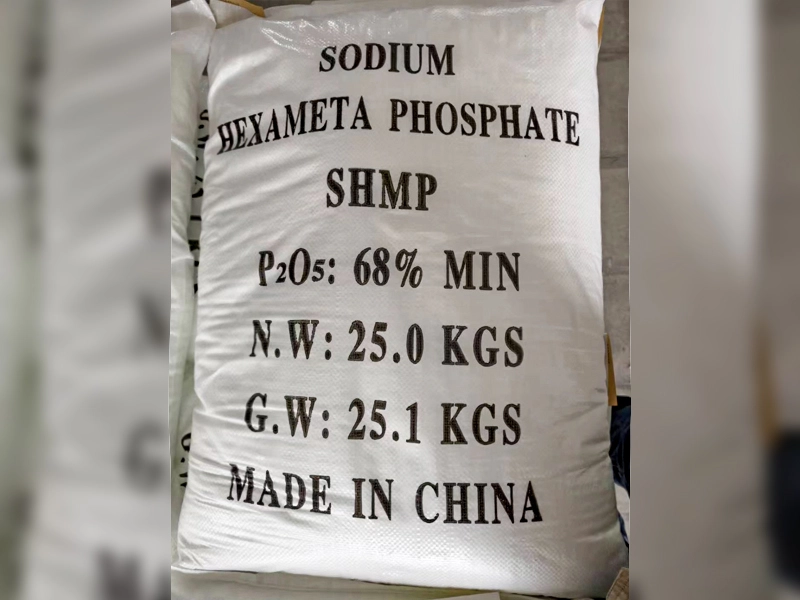
Introduction
Mineral processing is a crucial step in the extraction of valuable minerals from ores. Among the various techniques employed, Flotation is one of the most widely used methods. In this process, Ammonium sulfate plays a significant role, contributing to the efficient separation and recovery of minerals. This article will explore the multifaceted functions of ammonium sulfate in Mineral processing, delving into its mechanisms and applications.
Properties of Ammonium Sulfate
Ammonium sulfate is a white crystalline solid. It dissolves easily in water, which is a key characteristic for its applications in mineral processing. Under normal conditions, the compound has a relatively stable chemical structure. But when introduced into the mineral processing environment, it can participate in various chemical reactions.
Functions in Flotation
As a Collector Promoter
In the flotation process, collectors are substances that selectively attach to the surface of target minerals, making them hydrophobic and enabling them to be separated by froth flotation. Ammonium sulfate can enhance the interaction between collectors and minerals. For example, in the flotation of certain sulfide minerals, ammonium sulfate can react with the mineral surface, modifying its chemical properties. This modification promotes the adsorption of collectors, such as xanthates, onto the mineral surface. The ions within ammonium sulfate can interact with metal ions on the mineral surface, forming complexes or changing the surface charge. This change in surface properties increases the affinity between the collector and the mineral, improving the efficiency of mineral separation.
As a pH Adjuster
The pH value of the flotation pulp is a critical factor that affects the flotation behavior of minerals. Ammonium sulfate can act as a pH adjuster in some cases. When dissolved in water, ammonium sulfate goes through a chemical process that releases hydrogen ions, which slightly acidifies the pulp. In the flotation of some minerals, such as certain oxide minerals, a specific pH range is required for optimal flotation. By adjusting the pH with ammonium sulfate, the surface properties of the minerals can be altered. For instance, in the flotation of some copper oxide minerals, an acidic environment created by ammonium sulfate can enhance the activation of the mineral surface, making it more receptive to the action of collectors and thus improving the flotation recovery.
As a Depressant Suppressant
In complex ore systems where multiple minerals are present, depressants are used to selectively inhibit the flotation of unwanted minerals. However, in some situations, the over - use of depressants can lead to the suppression of target minerals as well. Ammonium sulfate can play a role in counteracting the excessive depressive effect. For example, in the flotation of lead - zinc ores, if an excessive amount of a depressant is added to inhibit the zinc minerals, it may also have an adverse impact on the flotation of lead minerals. Ammonium sulfate can interact with the excessive depressant or its reaction products in the pulp. It can disrupt the formation of inhibitory films on the surface of target minerals or reduce the adsorption of depressants on the target minerals, thereby restoring the floatability of the target minerals.
In Oxide Mineral Flotation
Copper Oxide Minerals: Copper oxide minerals are often more difficult to float compared to sulfide copper minerals. Ammonium sulfate can be used in the flotation of copper oxide minerals in several ways. Firstly, it can be used in combination with a sulfiding agent, such as sodium sulfide. Ammonium sulfate helps in the sulfidation process by promoting the reaction between the sulfiding agent and the copper oxide mineral surface. It increases the solubility of some metal ions on the mineral surface, facilitating the formation of a more reactive sulfide layer. This sulfide - coated surface is then more easily captured by collectors like xanthates. Secondly, ammonium sulfate can directly activate the copper oxide mineral surface. The ions within ammonium sulfate can interact with the surface of copper oxide minerals, changing the surface charge and enhancing the adsorption of collectors. For example, in the flotation of malachite, one of the common copper oxide minerals, the addition of ammonium sulfate has been shown to improve the flotation recovery significantly.
Lead Oxide Minerals: Similar to copper oxide minerals, lead oxide minerals also require specific treatment for efficient flotation. Ammonium sulfate can be used to improve the flotation of lead oxide minerals. In the pre - sulfidation process of lead oxide minerals, ammonium sulfate can enhance the effect of sulfidation. It helps in the formation of a more uniform and reactive sulfide film on the mineral surface. Additionally, ammonium sulfate can adjust the pulp chemistry in a way that promotes the adsorption of collectors on the lead oxide mineral surface. By optimizing the amount of ammonium sulfate added, the selectivity and recovery of lead oxide minerals in the flotation process can be improved.
In Sulfide Mineral Flotation
Pyrite Flotation: Pyrite is a common sulfide mineral. In some cases, during the flotation of valuable sulfide minerals, pyrite may also float along with them, which can reduce the grade of the final concentrate. Ammonium sulfate can be used to selectively depress pyrite. When added to the flotation pulp, ammonium sulfate can interact with the surface of pyrite. It can form a layer on the pyrite surface that inhibits the adsorption of collectors on pyrite, while not significantly affecting the floatability of the valuable sulfide minerals. This selective depression of pyrite helps in obtaining a higher - grade concentrate of the desired minerals.
Copper - Zinc Sulfide Ore Flotation: In the flotation of copper - zinc sulfide ores, separating copper and zinc minerals is a complex task. Ammonium sulfate can be used to adjust the flotation behavior of these minerals. For example, it can be used to activate copper minerals while suppressing zinc minerals under certain conditions. By carefully controlling the dosage of ammonium sulfate and other flotation reagents, as well as the pulp pH, it is possible to achieve a better separation of copper and zinc minerals, improving the recovery and grade of both copper and zinc concentrates.
Case Studies
A Copper Mine in South America: In a large - scale copper mine operation in South America, the ore contained a significant amount of copper oxide minerals. The traditional flotation process had relatively low recovery rates. After introducing ammonium sulfate into the flotation process, the recovery of copper increased by 10 - 15%. The mine operators adjusted the dosage of ammonium sulfate according to the characteristics of the ore. By optimizing the combination of ammonium sulfate with other reagents such as sodium sulfide and collectors, they were able to improve the overall efficiency of the flotation process, resulting in higher copper production and increased economic benefits.
A Lead - Zinc Mine in Australia: At an Australian lead - zinc mine, the ore was complex, and the separation of lead and zinc minerals was challenging. The initial flotation process faced problems such as low lead recovery and high zinc content in the lead concentrate. After conducting extensive research, the mine introduced ammonium sulfate into the flotation circuit. By using ammonium sulfate to counteract the excessive depressive effect of some reagents on lead minerals and adjusting the pulp chemistry, they were able to increase the lead recovery by 8 - 12% and reduce the zinc content in the lead concentrate by 5 - 8%. This improvement in flotation performance led to a significant increase in the profitability of the mine.
Conclusion
Ammonium sulfate plays a vital and versatile role in mineral processing, especially in the flotation process. Its functions as a Collector promoter, pH adjuster, and depressant suppressant contribute to the efficient separation and recovery of various minerals. Whether in the flotation of oxide minerals or sulfide minerals, ammonium sulfate can be tailored to suit the specific characteristics of the ore and the requirements of the flotation process. Through case studies, it is evident that the proper use of ammonium sulfate can lead to significant improvements in mineral processing efficiency, recovery rates, and concentrate grades, ultimately bringing economic benefits to the mining industry. As the mining industry continues to seek more efficient and sustainable mineral processing methods, ammonium sulfate is likely to play an even more important role in the future.
- Random Content
- Hot content
- Hot review content
- Oxalic acid for mining 99.6%
- Shock Tube Detonator
- Sodium Metal, ≥99.7%
- Magneto Electric Detonator(Anti stray current)
- Industrial Acetic Acid 99.5% Colorless Liquid Glacial acetic acid
- Adipic acid 99% used as the material of nylon 66
- Fuel Additive Octane Value Booster Ferrocene
- 1Discounted Sodium Cyanide (CAS: 143-33-9) for Mining - High Quality & Competitive Pricing
- 2China's New Regulations on Sodium Cyanide Exports and Guidance for International Buyers
- 3Sodium Cyanide 98% CAS 143-33-9 gold dressing agent Essential for Mining and Chemical Industries
- 4International Cyanide(Sodium cyanide) Management Code - Gold Mine Acceptance Standards
- 5China factory Sulfuric Acid 98%
- 6Anhydrous Oxalic acid 99.6% Industrial Grade
- 7Oxalic acid for mining 99.6%
- 1High Quality 99% Purity of Cyanuric chloride ISO 9001:2005 REACH Verified Producer
- 2Sodium Cyanide 98% CAS 143-33-9 gold dressing agent Essential for Mining and Chemical Industries
- 3 High-Quality Sodium Cyanide for Leaching
- 4Powdery emulsion explosive
- 5Industry Grade Electron grade 98% Sulfuric Acid H2SO4 Sulphuric Acid Battery Acid Industrial Sulfuric Acid
- 6Colloidal emulsion explosive
- 7sodium hydrosulfide 70% flakes used Mining Industry











Online message consultation
Add comment: